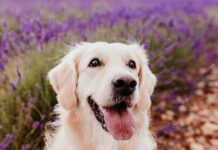
With the onset of winter, pet care demands a nuanced approach to adapt to the harsh conditions. This article targets seasoned pet owners, aiming to enrich their knowledge with sophisticated strategies for pet wellness during winter, ensuring not just survival but optimal health for their pets in the colder months.
Understanding and Managing Metabolic Changes in Cold Weather
Understanding Thermoregulation: In cold weather, pets expend more energy to maintain their body temperature, a process known as thermoregulation. This metabolic adaptation can lead to increased caloric needs. Thermoregulation varies significantly among breeds; for instance, huskies have a thick coat and are more adapted to cold weather, whereas greyhounds have minimal body fat and a thin coat, making them more susceptible to the cold. Thermoregulation involves a complex interplay of physiological mechanisms, including shivering and altered blood flow, which are fascinating to explore.
Breed-Specific Considerations: Smaller breeds and those with thinner coats may require additional caloric intake or even special clothing to maintain optimal body temperature. In contrast, breeds with thick coats might be more efficient at conserving heat and may not require significant dietary changes. For example:
Labrador Retrievers: Known for their double coat and high energy levels, Labradors might need a moderate calorie increase, especially if active outdoors.
German Shepherds: With a dense coat and high energy, they may require a slight increase in calories, but their dense coat provides significant warmth.
Bulldogs: With a short coat and less active nature, Bulldogs may not require a significant increase in caloric intake, especially if they are mostly indoors.
Incorporating Anti-Inflammatory Foods for Enhanced Joint Health
Impact of Cold on Joints:
Turmeric: Contains curcumin, known for its anti-inflammatory properties.
Fatty Fish: Salmon, mackerel, and sardines are rich in omega-3 fatty acids, which have anti-inflammatory effects.
Supplements: Glucosamine and chondroitin can also support joint health.
Hydration: A Key Aspect of Winter Pet Care
Physiological Implications of Dehydration: Dehydration in pets can lead to serious health issues. In winter, the dry air both indoors and outdoors can exacerbate these risks.
Maintaining Electrolyte Balance:
Encouraging Fluid Intake: Low-sodium broth, wet food, and ensuring fresh water availability are excellent ways to encourage fluid intake. Consider using pet water fountains and heated water bowls in outdoor environments.
Innovative Strategies:
Hydration Supplements: Pet-specific hydration supplements can be added to water to encourage drinking.
Hydration Through Fresh Foods: Incorporating fresh, water-rich foods like cucumbers or watermelon can increase water intake.
Environmental Humidity: Maintaining a healthy level of humidity indoors can help prevent the drying out of your pet’s skin and respiratory tract.
Mental Stimulation and Winter Exercise Strategies
Indoor Agility Training:
Labrador Retrievers: Benefit from fetch-based agility tasks and courses that allow them to navigate through obstacles.
German Shepherds: Ideal for complex agility challenges that require problem-solving.
Bulldogs: Focus on low-impact activities like simple tunnels or gentle ramps.
Advanced Obedience Training:
Labrador Retrievers: Challenge them with intricate commands or sequences of behaviors.
German Shepherds: Utilize their learning capability for advanced training such as scent work.
Bulldogs: Stimulate their minds with training that involves subtle movements or mental challenges.






